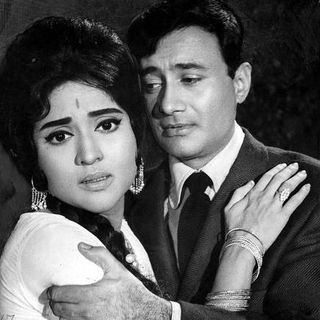
How India’s Private, Public, and NGO Schools Can Complement Each Other to Create a Stronger, Unified Education System
Public financing, private sector quality controls, and nonprofit agility could reshape India’s education landscape.

In India, discussions about education generally culminate with public and private schools being presented as direct substitutes for each other. However, this is a false dichotomy and, with 320 million students affected by the Covid19 pandemic, the divide between the public and private schools in India has only deepened further. The pandemic has highlighted the urgency to reconsider how we provide education in this country. Going forward, the only way to create a better, more effective system is to focus on combining the merits of the public and private sectors. Harnessing the synergies between the two sectors will allow us to empower each citizen with quality foundational education.
Currently, our formal education system approaches the two goals of accessibility and efficiency separately. While public schools endeavor to make education accessible, private schools aim for efficiency and profits. There is little acknowledgment of opportunities at the intersection of the two agencies.
In a 2013 article, Manish Sabharwal said about the state of the nation, “Any modern civilization stands on three legs; the government, private sector, and civil society. Unfortunately, all three in India are struggling with birth defects; the government has an execution deficit, the private sector has a trust deficit, and civil society has a scale deficit.”
The State, through government schools, takes the position of working towards public welfare and thus of extending education to even the lowest economic strata. The public sector in education, therefore, enjoys legitimacy among large sections of people, which non-public actors do not. However, it falls short in delivering quality education on a national level. This is in no way an indication of misplaced intentions but an inability to efficiently cater to a large population. For instance, public schools have a negative price after accounting for the provision of mid-day meals, textbooks, and other necessary resources.
Related on The Swaddle:
Dissecting the NEP: How the Policy Will Only Widen the Education Gap in India
It is then not surprising that more than 40% of school enrolment in India is in private schools, with large cities having more than 70% private enrolment. This data reflects people’s preference for private education owing to its better management and quality. A greater number of people opting for private schools skews the advocacy for students’ needs in favor of private-school goers. This further increases the gap between the public and private schools and concentrates the economically disadvantaged to government schools. This section is then left with very little bargaining power for better quality. Such social costs create a trust deficit in private schools in the long term.
As a result, only the State is in a position to resolve this polarization by extending a model of partnership and co-dependence. However, instead of shouldering the burden on its own, it can outsource education or certain aspects of it for improved efficiency. Although the State has tried to bridge the gap – through the Model School Scheme and a reimbursement plan under the RTE Act – these policies have poor implementation at the national and state level. Moreover, these methods strip away schools’ autonomy by making educational institutions vulnerable to the impulses of the government. This inevitably leads to these institutions opting out of the policies.
One effective step to bridge the gap would be to enable people to have access to their choice of schooling. For instance, if there is a system where the economically weaker sections have a choice outside government schools, it increases their palette. Education vouchers are one such approach, where government funding follows the student’s choice. That is, if a family chooses a school whose fees are beyond their means, the government grants them financial help. The voucher model breaks the traditional top-down approach, creating a decentralized and competitive system of schools. This step could further be supplemented with subsidies to the participating schools in procuring uniforms, books, lab equipment, and other resources.
However, providing vouchers and subsidies are only one-step solutions that will be ineffective unless we break away from the binary of government and private schools.
Related on The Swaddle:
How the Indian Education System Reinforces Caste, Class Differences
Another disadvantage of a siloed system of education at such a scale is its inability to adapt to difficult situations. At the beginning of the pandemic, both public and private schools faced a delay in transitioning to an online approach to schooling. Even when they were able to, there was a significant lack of training and instructions issued to teachers for coping with the new medium.
In the meantime, individual actors and NGOs have illustrated greater agility and efficiency in the educational ecosystem. Education-focused NGOs responded swiftly to the educational deficit in light of the pandemic, providing quality education to children from impoverished households through WhatsApp video or phone calls when physical schooling was not feasible. Although this illustrates the social trust that civil society attracts, it also calls attention to the fact that civil society suffers from not being able to scale up to the level of public or private schools without sufficient backing.
The way forward is to address all these issues at the grassroots level by giving families the ability to choose their preferred system of education. However, the choices have to go beyond the typology of private and public schools. It calls for these traditional actors to complement their roles as education providers by extending efficient options of public financing and private delivery. This partnership will not only contribute to a robust learning environment but also to providing a platform for individual actors to fill the gap where the institutions can’t currently reach.
Anagha Devanarayanan and Madhav Joshi are volunteers with Ayukta (@ayukta._), a zero-funds organization that teaches the children of domestic workers and drivers online during the Covid19 pandemic. They both have an interest in the Indian development sector and policy.
Related


Can We Move On? From The Man‑Child Trope As The Only Counter To Traditional Masculinity
